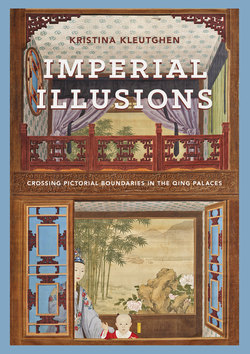Читать книгу Imperial Illusions - Kristina Kleutghen - Страница 85
На сайте Литреса книга снята с продажи.
Оглавление2.6Diagram demonstrating the method for depicting windows. From Nian Xiyao, The Study of Vision. The Bodleian Libraries, University of Oxford, Douce Chin. B. 2, p. 32r.
method he makes in the last two images, otherwise emphasizing result over process but not producing anything closer to a painting than a colorless draft sketch.
The third section (24r–29v) of The Study of Vision illustrates how to draw rectilinear forms set at various angles in three dimensions (figure 2.5), often using the same multiview approach as he did in at the beginning of the treatise in figure 2.3. The fourth section (29v–32r) discusses how to create open doors and windows in architectural spaces, the culmination of which comes in figure 2.6. However, with the exception of the A, B, C, D points, the grid marked on the floor in figure 2.6 could also be read as a simplified shadow cast by the open latticed window on the floor of the room, the ambiguity of this element again minimizing the method necessary to create it. Together, these two sections of the treatise generally present how objects occupy space in a representation and affect their surroundings as they do just as in real life, particularly those in section 4.
The fifth section (32v–42v) presents instructions for representing a variety of three-dimensional objects, most of which (36v–38r, 39r–41r) are rounded ceramics. Beginning
